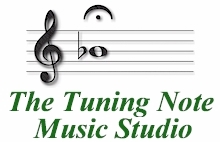| Dan Haerle: | It's All About The Half Steps (.pdf file) |
|
| GENERAL |
| What Is Jazz: | Click here to read what jazz is, from a few different sources. |
| Jazz: | This term (for our purposes) refers to a style of music with 3 general characteristics: improvisation, syncopation, and a "swing feel." It is also important to have an accurate understanding of the history of jazz music, including it's origins with the rhythms of African drums, to the various musicians' lives (e.g., discrimination, financial hardship, etc.) that affected their freedom of expression through this type of music. |
| Jazz Improvisation: | This term refers to when a jazz musician is basically composing "on the spot," or making up his/her own melodies (not just making up notes, but melodies). There are several "tools" or elements of jazz expression that can be used, primarily harmonic or rhythmic. |
| THEORY RELATED |
| Voicing: | This refers to the choice a pianist, guitarist, or arranger might use to reflect a particular chord. For example, he/she might decide to use an inversion of the chord, include the 9th and 13th but no fifth, etc. |
| ii-V-I Chord Progression: | This is perhaps the most common chord progression in jazz music. This progression is important mostly for it's voice leading and resolution, from one chord to the next. |
| PERFORMANCE RELATED |
| Fakebook: | This refers to a book containing a collection of lead sheets/tunes, where for each tune what is only provided is the melody and chord symbols. Sometimes included are rhythm parts and horn lines when applicable. |
| Improvise: | This means to create your own melodies and rhythms, spontaneously, but generally within the guidelines of the chord progression(s) and overall form and structure of a tune or piece of music. |












